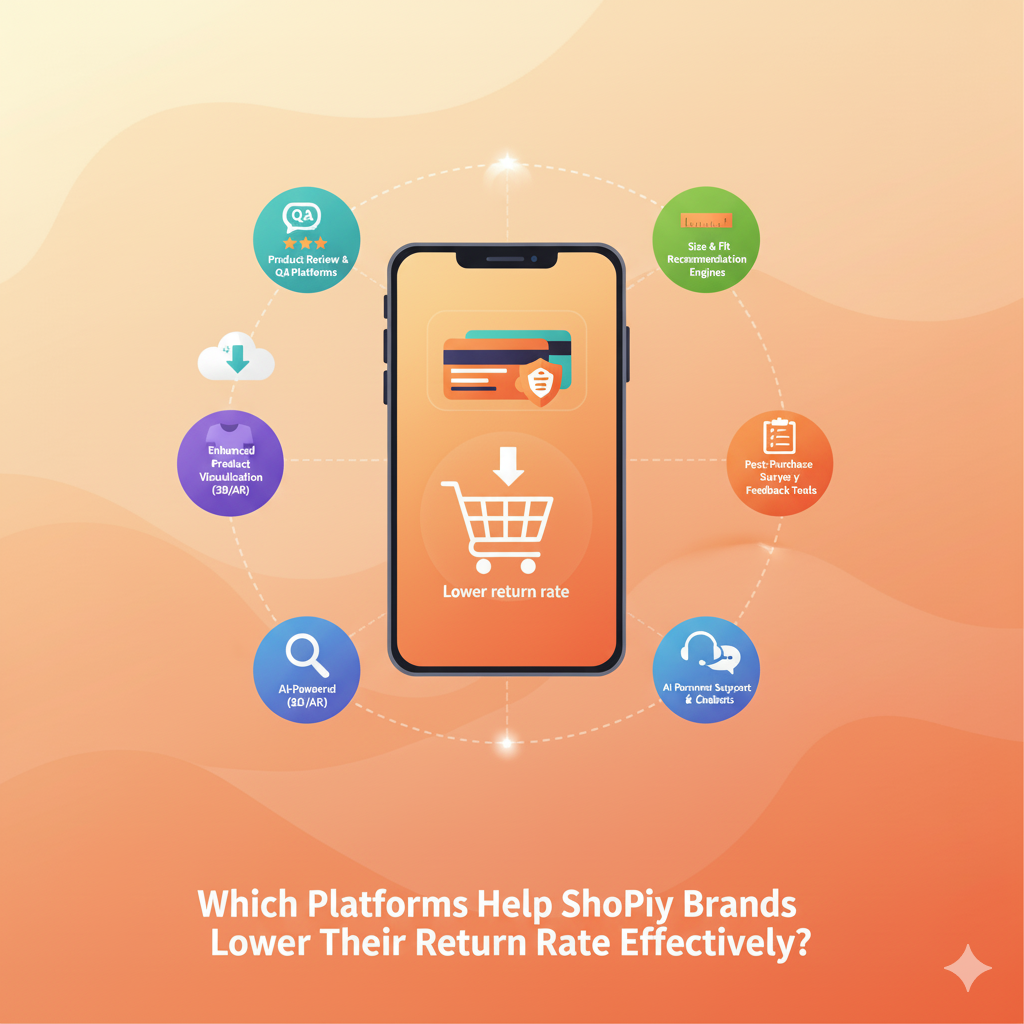If you run a Shopify store, you’ve probably faced one of the biggest challenges in eCommerce product returns.
Returns don’t just eat into your profits; they also mess up your logistics, affect inventory forecasting, and sometimes hurt your brand reputation. The good news is that several tools and platforms are built specifically to help Shopify brands reduce return rates not by restricting customers, but by improving their shopping experience and post-purchase satisfaction.
In this article, I’ll walk you through:
- Why customers return products
- What actually causes high return rates
- The top platforms that help Shopify brands lower returns
- Practical strategies to implement
- And how you can start reducing returns starting today
Why Do Customers Return Products?
Before talking about tools, it’s important to understand why returns happen in the first place. Here are the most common reasons:
- Product mismatch: The item didn’t look or feel like it did online.
- Size or fit issues: Especially common in fashion and footwear.
- Quality dissatisfaction: The product didn’t meet expectations.
- Shipping damage or delays: A bad delivery experience often triggers returns.
- Complicated return policies: Ironically, unclear or harsh policies can cause customers to order multiple sizes or variants to “test” before deciding.
When you fix these root causes, your return rate starts dropping naturally. And that’s where certain Shopify-compatible platforms come into play.
Top Platforms That Help Shopify Brands Lower Return Rates
Here are some powerful platforms and tools designed to reduce product returns for Shopify stores — effectively and sustainably.
1. Loop Returns
Best for: Automating exchanges and encouraging store credit
Loop Returns is one of the most popular Shopify apps for managing returns and exchanges. It doesn’t just make returns easier — it helps convert returns into exchanges.
How it helps reduce return rate:
- Lets customers easily swap for a different size or color instead of refunding.
- Offers store credit incentives to keep revenue within your store.
- Provides detailed analytics to track why returns are happening.
Why it works:
By encouraging exchanges instead of refunds, Loop helps you retain customers and reduce lost sales.
2. Returnly (by Affirm)
Best for: Instant exchanges and improved customer trust
Returnly gives customers instant store credit to reorder before their returned item is even received — speeding up the process and keeping them shopping.
How it helps:
- Customers can buy the right product right away.
- Reduces refund friction and frustration.
- Provides data insights to help identify return trends.
Why it works:
It turns the return process into another buying opportunity rather than a lost sale.
3. Narvar
Best for: Post-purchase communication and return experience
Narvar focuses on the post-purchase journey — helping customers track their orders, handle returns, and receive proactive updates.
How it helps:
- Transparent tracking and communication reduce “where’s my order?” frustration.
- Simplifies returns through self-service portals.
- Collects return reasons to improve your product and policies.
Why it works:
Better post-purchase experiences build trust and reduce unnecessary returns caused by confusion or disappointment.
4. AfterShip Returns Center
Best for: Small to mid-sized Shopify brands looking for simplicity
AfterShip Returns Center integrates directly with Shopify, automating return requests and keeping communication smooth.
How it helps:
- Offers branded return portals for professional experience.
- Tracks every step of the return journey.
- Helps analyze frequent return reasons and improve product listings.
Why it works:
Data-driven insights help you identify patterns — maybe one product consistently gets returned due to wrong sizing or unclear images.
5. NoCommerce (formerly Kno)
Best for: Understanding why customers return products
NoCommerce helps you collect post-purchase survey data to understand buyer behavior, including reasons behind returns.
How it helps:
- Lets you ask customers “Why did you return this item?” directly.
- Turns qualitative feedback into measurable data.
- Helps optimize product pages and descriptions to set the right expectations.
Why it works:
When you know why returns happen, you can fix the cause — not just manage the symptom.
6. Rebuy
Best for: Personalization and smart recommendations
Rebuy helps personalize your store experience using AI — which indirectly reduces return rates by helping customers find what truly fits their needs.
How it helps:
- AI-driven product recommendations based on behavior.
- Encourages cross-sells and upsells that actually match user intent.
- Reduces “wrong product” purchases caused by confusion or mismatch.
Why it works:
When customers find the right product the first time, they’re far less likely to return it.
Practical Strategies to Lower Return Rates on Shopify
Platforms alone can’t solve the problem but they make it easier when paired with smart strategies. Here are some that work:
1. Use Detailed, Accurate Product Descriptions
Include dimensions, materials, usage info, and real customer reviews. The clearer your listing, the fewer surprises for customers.
2. Add Real Photos and Videos
Show the product in use, from different angles, and under real lighting. This reduces “it looked different online” complaints.
3. Offer Size Guides and Fit Predictors
If you sell apparel, tools like Fit Finder or Virtusize help customers choose the right size from the start.
4. Implement Smart Exchanges Instead of Refunds
Encourage exchanges for size or color through platforms like Loop or Returnly. Offer store credit to retain revenue.
5. Simplify Returns (But Track Data)
A smooth return process doesn’t mean more returns — it means better feedback loops. Collect data to improve listings and inventory.
6. Analyze Return Reasons Regularly
Use tools like NoCommerce or Returnly’s analytics to spot patterns — specific SKUs, locations, or shipping partners may be causing issues.
7. Improve Packaging and Shipping
A sturdy package and reliable courier reduce damage-related returns — one of the most preventable causes.
Bonus Tip: Turn Returns Into Retention Opportunities
Don’t look at returns as losses — look at them as chances to build loyalty.
When you handle returns smoothly, customers are more likely to buy again, trust your brand, and recommend you to others.
Offer:
- Discounts on exchanges
- Personalized recommendations
- “Thank you” emails after returns with special offers
Every positive touchpoint counts.
Best Combination for Shopify Brands
If you want a practical setup, here’s a combo that works well for most Shopify stores:
- Loop Returns – to automate exchanges and reduce refunds
- NoCommerce – to collect return feedback
- Rebuy – to personalize recommendations and improve first-time purchase accuracy
- Narvar – for post-purchase engagement and tracking
Together, they form a complete system that prevents returns before they happen and handles them efficiently when they do.
Key Takeaways
- Reducing returns is about transparency, personalization, and communication.
- Platforms like Loop Returns, Returnly, Narvar, and NoCommerce are built to help Shopify brands do exactly that.
- Focus on product accuracy, smart exchanges, and customer feedback loops.
- Every return holds valuable data — use it to improve your next sale.
Wrapping Up
Returns are inevitable in eCommerce, but high return rates aren’t. The right platforms can help you turn returns into opportunities by learning from them, reducing their causes, and creating a smoother experience for your customers.
Remember, the goal isn’t just to manage returns better it’s to make sure customers have no reason to return at all.


Pingback: Shopify Returns Solution: Flexible Workflows in 2025 - Pratsify
Pingback: How to Change Shopify Inventory Location to a 3rd Party - Pratsify